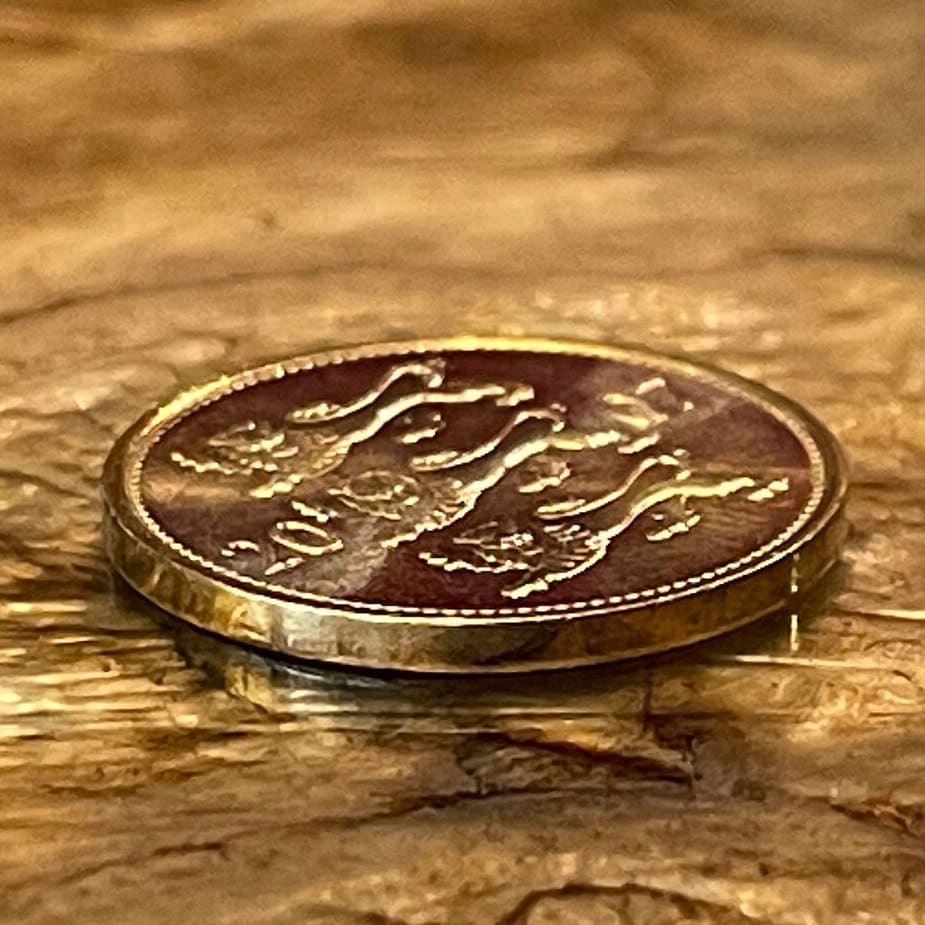elemintalshop
Three Estonia Lions Passant Gardant 50 Senti Authentic Coin Money for Jewelry and Craft Making
Three Estonia Lions Passant Gardant 50 Senti Authentic Coin Money for Jewelry and Craft Making
Couldn't load pickup availability
Three Lions Passant Gardant 50 Senti Estonia Authentic Coin Money for Jewelry and Craft Making
Obverse: Three Lions from the Estonia Coat of Arms divide date.
Reverse: Denomination.
Lettering: EESTI VABARIIK
50 SENTI
Translation: Republic of Estonia
Features
Issuer Estonia
Period Republic (1991-date)
Type Standard circulation coin
Years 1992-2007
Value 50 Senti (0.5 EEK)
Currency New kroon (1992-2011)
Composition Copper-aluminium-nickel (93% Copper, 5% Aluminium, 2% Nickel)
Weight 2.99 g
Diameter 19.5 mm
Thickness 1.45 mm
Shape Round
Technique Milled
Orientation Medal alignment ↑↑
Demonetized 1 January 2011
Number N# 2782
References KM# 24, Schön# 25
Wikipedia:
The coat of arms of Estonia depicts a golden shield, which includes three slim blue lions passant gardant with red tongues in the middle and golden oak branches along both sides of the shield. The three lions derive from the arms of Danish king Valdemar II who had conquered northern Estonia in 1219. The lions became part of the greater coat of arms of Tallinn, the centre of Danish government in Estonia, and the knightages (German: Ritterschaften) of Harria and Viru.
In 1346, Denmark sold its Estonian dominion to the Teutonic Order after its power had been severely weakened during the St George's Night Uprising of 1343-1346. The three lions, however, remained the central element of the greater coat of arms of Tallinn. In later centuries, the motif of the three lions transferred to the coat of arms of the Duchy of Estonia, the Ritterschaft of Estland, and to the coat of arms of the Governorate of Estonia. The Riigikogu (the state assembly) of the independent Republic of Estonia officially adopted the coat of arms on 19 June 1925.
The coat of arms was officially banned following the occupation of Estonia by the Soviet Union in 1940, and replaced with the Soviet-inspired emblem of the Estonian Soviet Socialist Republic. Soviet officials persecuted and jailed anyone using the coat of arms or the national colours of Estonia. The coat of arms remained in use in the West by a number of surviving diplomatic representatives of the Republic of Estonia and by the Estonian government-in-exile. The readoption of the national symbols, which was finally achieved on 7 August 1990, marked one of the high points in the struggle for the restoration of an independent Estonian state. The use of the coat of arms is regulated by the Law on State Coat of Arms, passed on 6 April 1993.
Share










5 stars review from Crystal
The coins are absolutely beautiful. I liked the way you packed and sent them. great condition. Now , off to the jeweler to make a coin braclets.
Thank You,
Kathy
5 stars review from Jena









